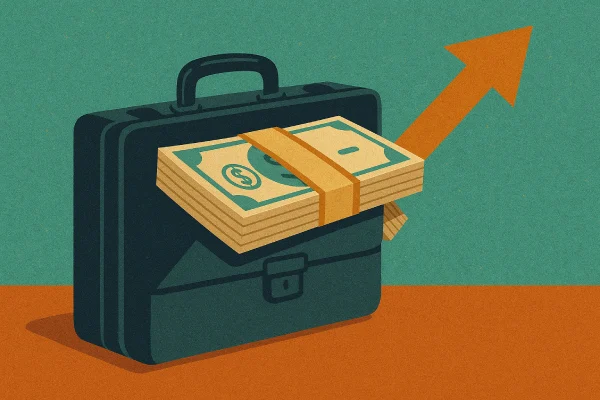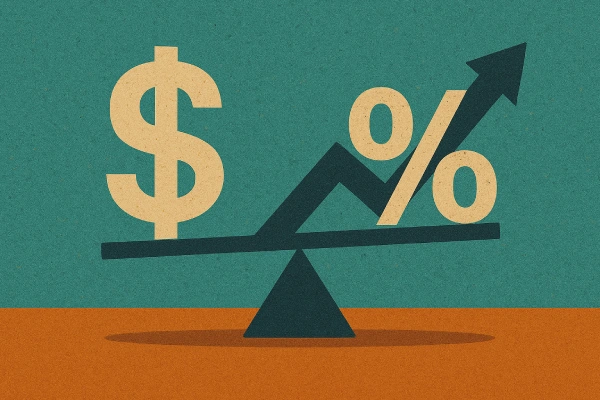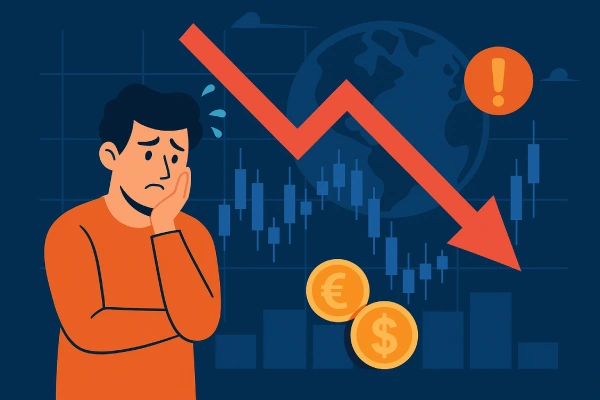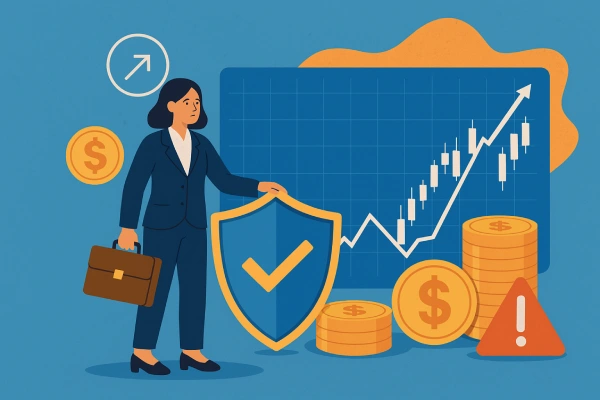Carry Trade in Forex Explained: How Smart Traders Earn from Interest Rates
Carry Trade in Forex Explained: How Smart Traders Earn from Interest Rates
"Uncover the carry trade strategy in forex and how traders generate passive income by simply holding the right currency pairs."
Wikilix Team
Educational Content Team
16 min
Reading time
Intermediate
Difficulty

What if I told you that you could make money in forex not just by forecasting where the price will go, but simply by holding the right currency pair? Sounds almost too good to be true. Welcome to carry trade. It has been around for decades, used by sophisticated traders and hedge funds. While most newbie forex traders spend their time scalping, the true professional Trader knows that the most significant edge they can get in their trading account is to understand that interest rates will reward them quietly over time. In this article, I will show you what carry trading is, how it works, why it's essential, and how you can take advantage of it to grow your account not only in the future, but right now through carry trading, whether as a full-time forex trader or as a way to supplement your income on the side.
What is a Carry Trade?
Simply put, a carry trade is a strategy where a trader borrows money in a currency that has a low-interest rate charged against it (ie, Japanese yen at 0.1%) and then invests it into a currency that has a higher interest rate (ie, Australian dollar at 4.5%). By understanding the process of exchanging currency from one rate to the other, a trader can earn the difference between the interest charge and the deposit, which is known as the interest rate differential.
So let's say: You borrow in Japanese yen.
The interest rate is 0.1%.
And invest in the Australian dollar.
The current interest rate is 4.5%.
You're earning the 4.4% spread on that AUD/JPY position – assuming nothing else has been changed. This is your carry. The longer you hold that position, the more possible benefit you could be creating by that difference.
Now for the catch: This strategy only works when there isn't any significant change in the exchange rate, or it changes in your favor.

Why Carry Trades Matter in Forex
In forex trading, it's not just about predicting price direction—it's about managing risk and reward over time. Many traders only focus on technical charts, candlesticks, and news headlines. Carry trading is unique in that it can offer potential appreciation in return streams, even at times when markets do not move.
Why professionals love carry trading:
Passive income: You earn income just by holding a position.
Compounding effect: Over time, carry proceeds can build up.
Predictable rationale: Carry trading is based on interest rate policies and not just price speculation.
Like all trading styles, carry trading is not without risk—but carry trading is one of the few categories of trading where time can be on your side.
Interest Rates Matter in Forex
Before we examine strategies, let us clarify why interest rates matter in forex at all.
Currencies reflect the health and policy of the issuing central bank. When a country's interest rates rise, it typically attracts an influx of investments into its country, where the local currency appreciates. The opposite occurs when their interest rate declines.
This is why currencies like:
Japanese yen (JPY) or Swiss franc (CHF) are called "funding currencies"—they have historically low rates.
Australian dollar (AUD) or New Zealand dollar (NZD) are called "high-yield currencies"—they typically yield higher rates.
Carry traders can also exploit the interest rate differential. Carry Trade in Action
Let's say you're a forex trader beginning in early 2022.
Japan's Interest Rate: 0.10%
New Zealand's Interest Rate: 3.50%
You open a long position on NZD/JPY (NZD is bought, while JPY is sold).
If you hold it overnight, the broker credits interest to the interest-bearing account according to the interest rate difference.
Hold a long position over a longer timeframe, and you accumulate these daily payments (known as swap or rollover fees). This may seem trivial, but weeks or months later, you're suddenly looking at a substantial payment.
And what if the NZD appreciates against the JPY? Oh yes—you're now earning interest income as well as capital gains.

Finding Carry Trade Setups
To identify potential trade setups for a carry trade, consider the interest rate differences between currencies. You will be able to find differences in interest rates:
On broker platforms (they will have swap or rollover rates)
On financial news websites (central bank news)
On global economic calendars
Everyday carry trade pairs include:
AUD/JPY
NZD/JPY
USD/TRY (high risk)
ZAR/JPY (emerging market trade)
Note: Emerging market currencies are likely to provide significant payout opportunities, but more political and inflation risk must also be factored in.
Risks of Carry Trading
No trading strategy is without risk, and carry trading is no exception. The most common risks include:
1. Currency Volatility
If the currency you are holding depreciates, you could lose all of your interest earnings—or much more. Central Bank Surprises
When interest rates suddenly get cut (or raised in the funding currency), your trade can go from profitable to losing in less than a day.
3. Global Risk Sentiment
Carry trades tend to unwind quickly in times of stress. When fear hits the markets, traders rush back to safe-haven currencies such as the yen, killing high-yield pairs.
4. Broker Fees
Some brokers offer negative swaps even on carry-positive trades. Always check your broker's swap rates before opening a position.

How to Manage Risk in Carry Trades
Savvy carry traders protect themselves by:
Making sure they have used stop loss orders to cap maximum loss
Making sure they do not over-leverage, even when the trade looks "safe"
Paying attention to central bank decisions and global news
Diversifying across pairs or even asset classes
Remember that the key is not just to enter a carry trade, but to be able to be in a carry that remains valid.
Is Carry Trading Right for You?
Carry trades are great for:
✅ Traders that prefer slower, long-term setups
✅ Traders that pay attention to central bank trends and macro data
✅ Anyone who wants to add a passive yield element to their portfolio
But not for:
❌ Short-term scalpers
❌ Traders who do not like holding positions overnight
❌ A trader that will not withstand volatility

Final Thoughts - Patience Wins
Carry trading is not sexy. It won't double your account in a week. But this is why professionals love it. It's a disciplined strategy that is based on real economic variables. You are not guessing - you are being paid to wait.
So next time you are making your trading plan, it is worth considering:
Which currency is paying the most interest rates?
Is the global market stable enough for a carry trade?
Can I afford to hold a position long-term?
If the answers align, you might have a profitable setup.
Because sometimes in forex, the best trade isn't chasing price... it's simply earning interest.
What's Next?
Keep building your knowledge with our structured learning path. Each section builds upon the previous one.
This is the first section
You're at the beginning of your journey!
This is the last section
You've completed this course!
